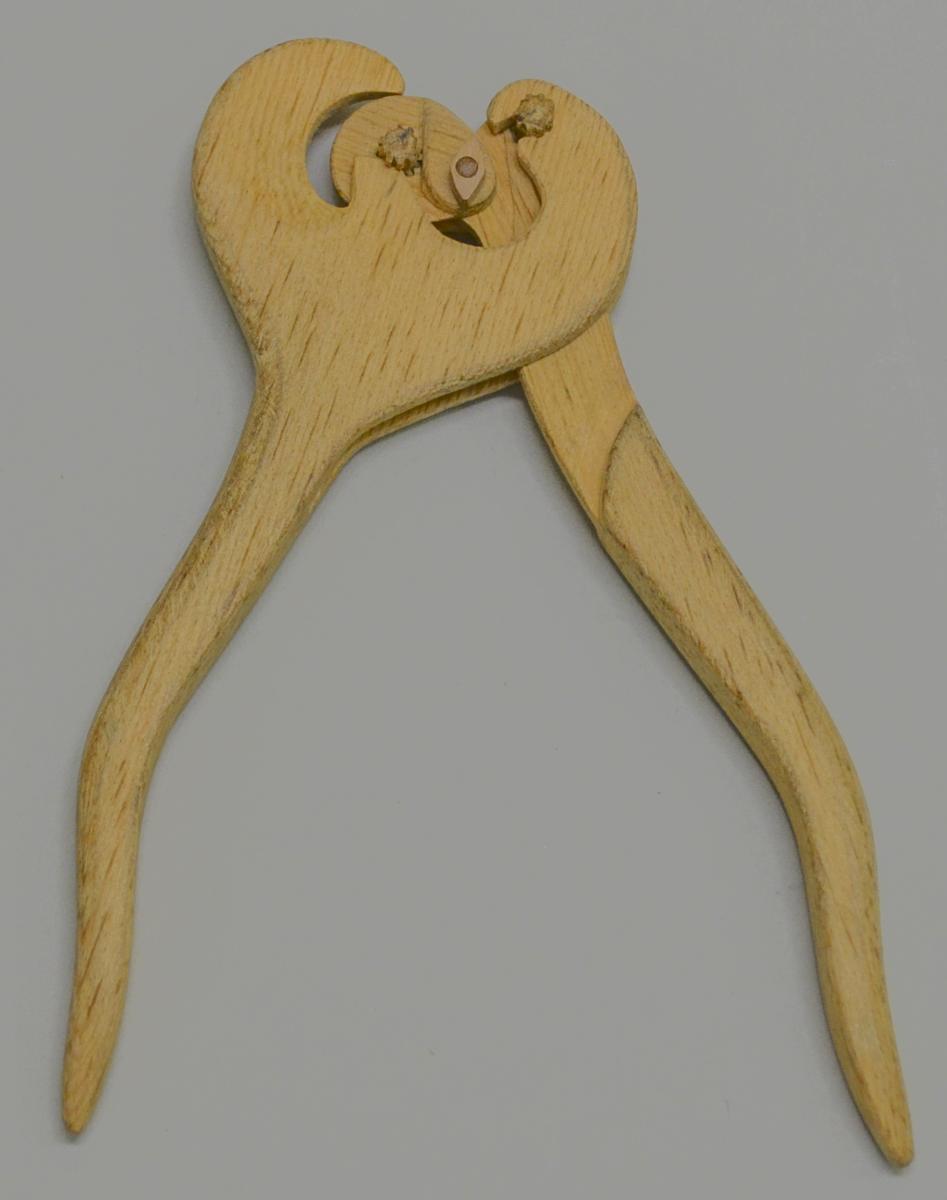The United States was the only country in the world that required inventors to submit models as part of the patenting process. Congress officially ended this policy in 1870 but the Patent Office kept the requirement until 1880. Still, models continued to trickle in well into the first quarter of the twentieth century.
Hagley’s collection of over 5,000 patent models reflects the slow sunsetting of this process. While we have over 2,000 models from the 1870s alone, only about 600 are from the following five decades. Our latest model was patented in 1922—over fifty years after Congress told inventors to stop. And while inventors stopped sending models, modeling remained a critical component of the inventing process during the remainder of the twentieth century.
Recently, Hagley jumped at the chance to acquire one of these models that, while it was never included with the inventor’s patent application, still earned him a patent, and was manufactured by a well-known company. I present to you Spencer W. Thomas’s improvement on the cattle emasculator.


What is an “emasculator” exactly? It is a hand-held device that cuts off the blood supply to the testes of a bull as quickly and painlessly as possible. The testes atrophy in place with very little to no bleeding thereby inhibiting infection, injury, or further distress to the animal. Still used today, this instrument allows ranchers to select and control their breeding stock, reduces aggression in the animal, and contributes to better marbling of the fat in muscle tissue.
The inventor of this emasculator, Spencer W. Thomas, was born on a farm in Hitchcock County, Nebraska in 1903. Being of Welsh ancestry, his family later moved to the small Welsh community of Rosefield near Trenton, Nebraska. We know he graduated from high school and was active in his church. He then married at age 25, rented his own farm, and he and his wife welcomed a son, Lindy Wayne Thomas.
Tragedy struck months after Thomas patented this invention. Torrential rains began on Memorial Day 1935 and continued through the night. The Dust Bowl drought of the previous year created conditions where the soil could not contain that much moisture. Overnight, flood waters from the engorged Republican River and nearby creeks submerged Trenton and the surrounding valley. Many did not realize the danger until daylight revealed the extent of the flooding. By then, it was too late. The flood, plus the accompanying tornado that afternoon, destroyed millions of dollars of property and livestock and killed over 100 people. Thomas and his parents died when their home was literally swept away by the flood waters with all three inside. While the body of his mother was found a month later seventy-five miles downriver, the bodies of Thomas and his father were never recovered. His wife and 4-year-old son Lindy survived.
 When Lindy died in 2021, his son, Brian Thomas, wondered what to do with his grandfather’s invention. Rather than having it, in his words, “end up back in a box in the bottom of my closet,” he looked for a place to “donate it and allow others to enjoy it.” That is when he searched the internet and discovered Hagley.
When Lindy died in 2021, his son, Brian Thomas, wondered what to do with his grandfather’s invention. Rather than having it, in his words, “end up back in a box in the bottom of my closet,” he looked for a place to “donate it and allow others to enjoy it.” That is when he searched the internet and discovered Hagley.
In addition to the model, he donated a production version of the emasculator, pictured on the right. Engraved on the side is “Thomas Non-Slip Emasculatome” along with the patent number though the patent is listed as “pending.” This meant that the patent application had been submitted but was not patented yet and suggests a production date of roughly between January and October 1934.
Finally, the model was packed inside a wooden shipping box addressed to the Western Instrument Company in Chicago (see below). Incorporated in 1902, this company manufactured veterinary instruments and probably made the production version. It still exists today as a subsidiary of the Colorado Serum Company.
 Though models are no longer submitted to the US Patent and Trademark Office, modeling continues to be an important step in the process of developing new products. A whole industry of professional modelers supports the efforts of inventors to find new and unique solutions to everyday problems across a broad range of industries. This acquisition helps Hagley expand our telling of the story of American innovation. Not only is it a rare surviving group that demonstrates how inventions were patented from conception to consumer product, but it also establishes a physical connection between the Golden Age of Inventing of the last half of the nineteenth century to America’s perpetuation of that tradition through the twentieth century and today.
Though models are no longer submitted to the US Patent and Trademark Office, modeling continues to be an important step in the process of developing new products. A whole industry of professional modelers supports the efforts of inventors to find new and unique solutions to everyday problems across a broad range of industries. This acquisition helps Hagley expand our telling of the story of American innovation. Not only is it a rare surviving group that demonstrates how inventions were patented from conception to consumer product, but it also establishes a physical connection between the Golden Age of Inventing of the last half of the nineteenth century to America’s perpetuation of that tradition through the twentieth century and today.
Sources & Further Reading
Spencer W. Thomas
The Republican River flood of May 30-31, 1935
- https://www.weather.gov/gld/1935flood
- https://history.nebraska.gov/gentle-river-goes-mad-the-republican-river-flood-of-1935/
- https://en.wikipedia.org/wiki/Republican_River
- https://pubs.usgs.gov/wsp/0796b/report.pdf
Livestock Castration
- https://pubs.nmsu.edu/_b/B227/
- https://beefrunner.com/2011/05/12/why-castrate-cattle/
- https://en.wikipedia.org/wiki/Emasculator
Modeling
Chris Cascio is the Alan W. Rothschild Assistant Curator, Patent Models at Hagley Museum and Library
